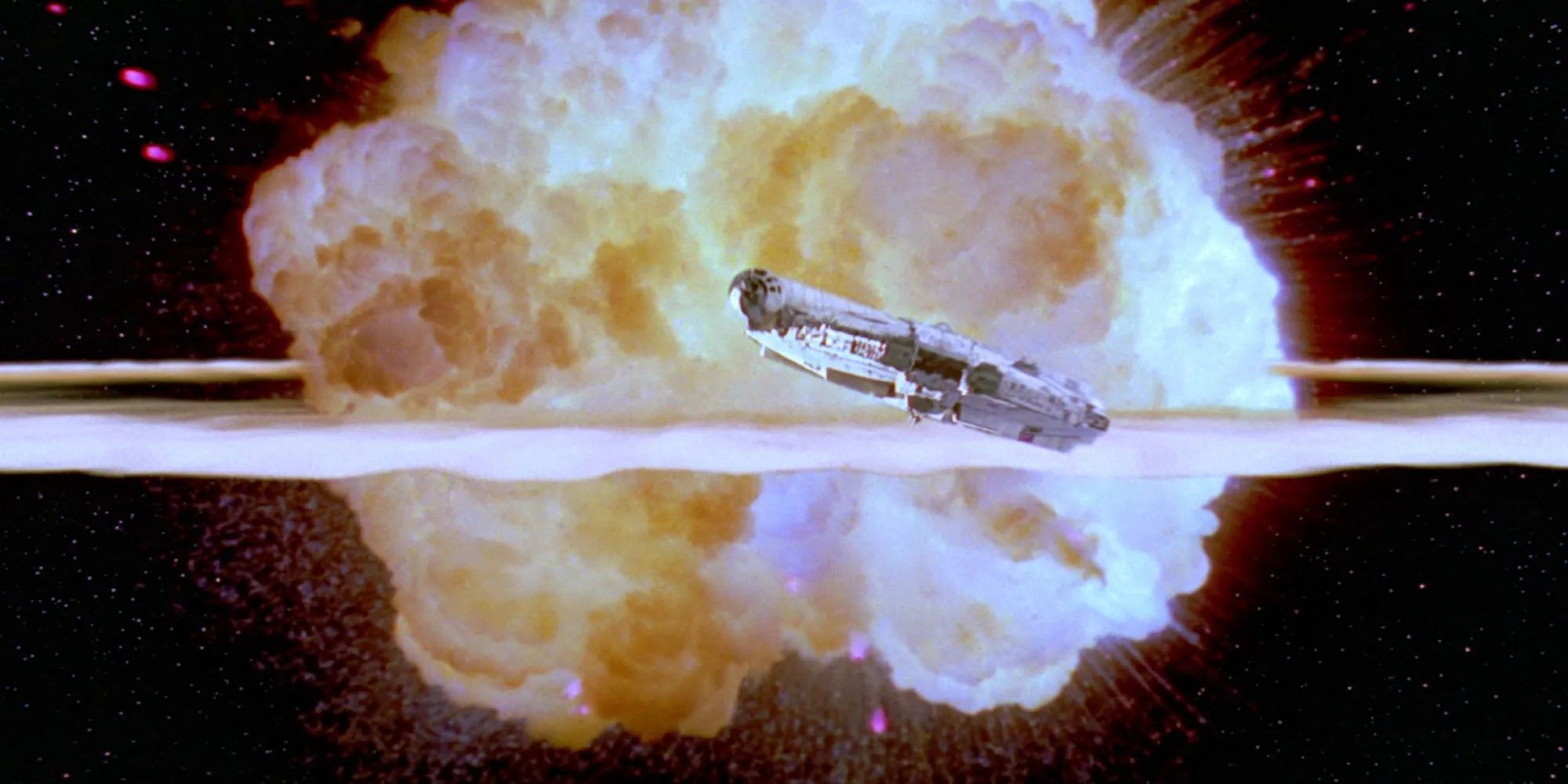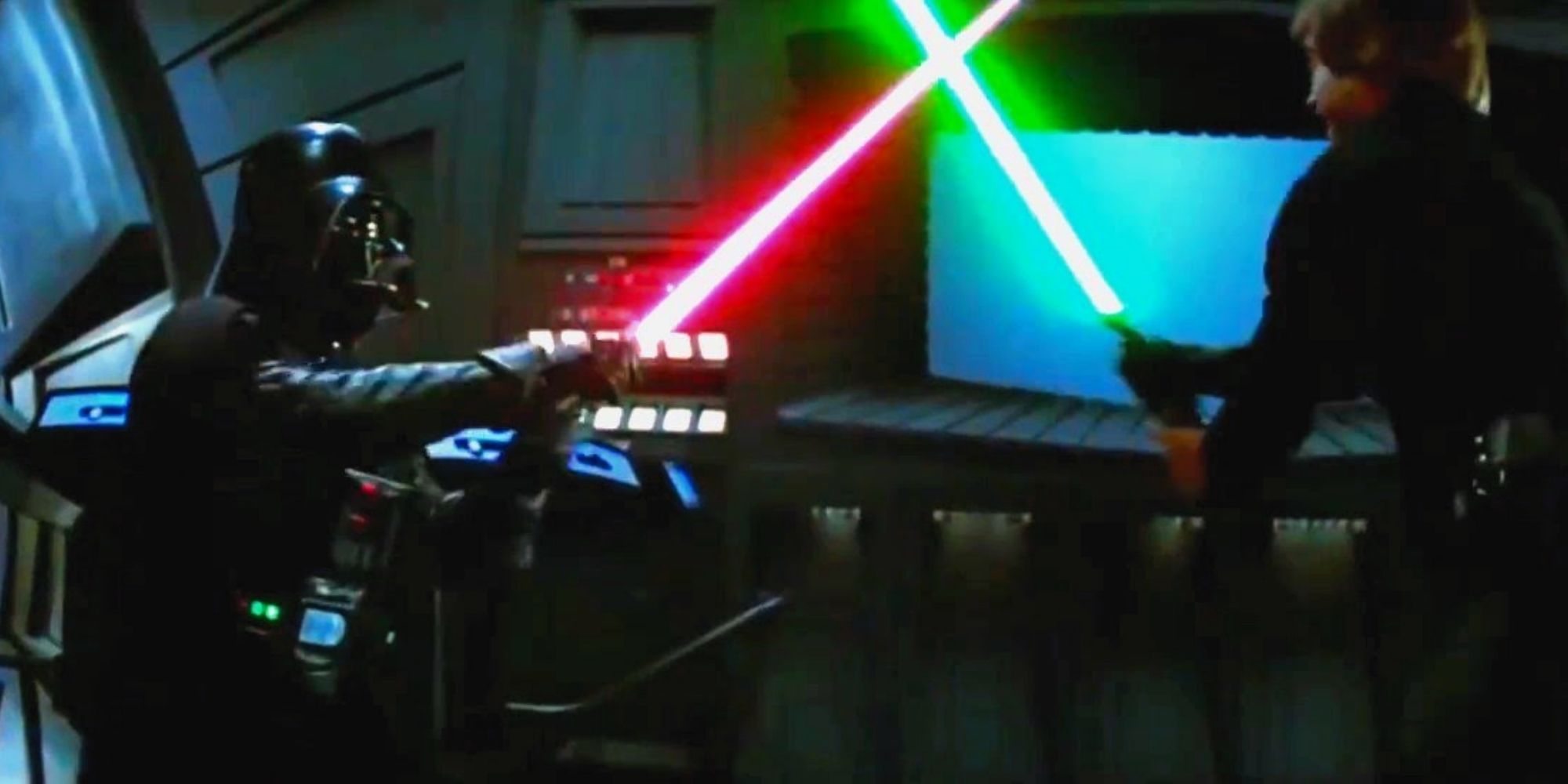The Big Picture
- The Star Wars franchise doesn’t have a fixed calendar or timeline, making it difficult to keep track of events and their order.
- Star Wars: Episode IV — A New Hope is considered the center of gravity for the Star Wars franchise due to its historical importance and cultural impact.
- The Battle of Yavin, where the first Death Star was destroyed, serves as a significant event that divides the Star Wars calendar into “before the Battle of Yavin” (BBY) and “after the Battle of Yavin” (ABY).
With Ahsoka introducing the World Between Worlds and other realms of the Force, Star Wars is about to get all “timey wimey” with the possibility of time travel and flashbacks. The series also has lots of ties to previous Star Wars stories, especially the animated series Star Wars: The Clone Wars and Star Wars Rebels, so we often need to refer to something in the past to make sense of how things are in the present. For example, when exactly did Grand Admiral Thrawn (Lars Mikkelsen) and Ezra Bridger (Eman Esfandi/Taylor Grey) vanish, and how long have they been missing?
This can be confusing because of this whole jumping back and forth, but there’s an extra layer that contributes to that: Star Wars doesn’t have a fixed calendar or timeline, so there is no single time reference to anchor all these references. You can look at Ahsoka as taking place around 10 years after the end of Rebels, or even further if compared to The Clone Wars. The Mandalorian starts around 5 years after Star Wars: Episode VI — Return of the Jedi, which, in turn, is set 30 years before Star Wars: The Force Awakens. That’s a lot of going back and forth in the timeline and doesn’t make it any easier when trying to visualize the causes and consequences of key events in galactic history.
What Is the Most Common Way of Measuring Time in ‘Star Wars’?
The best way to start putting order into this timey wimey chaos is to identify trends and the most popular ways of measuring time. The Mandalorian and The Force Awakens may use Return of the Jedi as their reference, and the upcoming series The Acolyte is using Star Wars: Episode I — The Phantom Menace in its marketing campaign, but when we take a broader look at how the Star Wars galaxy is structured and how things happen, the inevitable conclusion is that the center is actually Star Wars: Episode IV — New Hope.
There are many reasons for this, the most important being that A New Hope is the movie that started the whole Star Wars franchise back in 1977, and it isn’t a stretch to say that everything that followed only happened because the first movie was such a huge success. There wouldn’t have been two sequels, a Prequel Trilogy, a Sequel Trilogy, multiple TV series and movie spin-offs, games, novels, comics, and whatnot, if not for A New Hope, so everything goes back to it. Before the Prequel Trilogy came out, the movie was even known as just Star Wars. *The* Star Wars. It’s naturally the center of gravity for the franchise.
Another reason is the fact that there aren’t many people who have never seen A New Hope. It’s one of the biggest box offices ever, a pop culture landmark, and it’s the reference we keep going back to whenever talking to someone who’s not familiar with Star Wars. Sure, Darth Vader’s (David Prowse/James Earl Jones) coming out as Luke Skywalker’s (Mark Hamill) father in The Empire Strikes Back may be the most iconic moment in the franchise, but all the rest is A New Hope. “Use the Force,” Darth Vader’s breathing, all the “pew pew!” noises, flying starships, lightsaber sounds people playfully make… That’s where it all comes from, so it’s easier to use it as a reference even for non-initiates, too, because it’s familiar to everyone.
What About ‘A New Hope’s Story Makes It the Best Reference for Time Measurement?
As we’ve established previously, there is no single reference for time in the Star Wars universe, so everything happens in this sense because it becomes conventional. No Roman Emperor decided to build a calendar around the birth of a savior, for example, because there is no savior in Star Wars, so people just take important events as they come. But even looking at it like this, A New Hope is still at the center of galactic history because of one very important event: the destruction of the first Death Star in the Battle of Yavin.
Everything that happened on a galactic scale before the Battle of Yavin can be considered as leading up to it, there are virtually no exceptions. A commercial blockade on Naboo. A political conspiracy leading up to a war decades prior. A frustrated Jedi Padawan leaving the Order. A young man finally leaving the streets of Corellia behind. A girl losing her parents and being raised by a radical. Things happen the way they have to, and it all leads to the Battle of Yavin. The same works for everything that came after it. There would be no efforts to find the pilot who destroyed the Death Star if Darth Vader didn’t feel the Force in him. A scoundrel and a Princess would probably never have fallen in love. A whole galaxy wouldn’t have seen that it is indeed possible to fight back against tyranny.
All these reasons are why, conventionally, the Star Wars calendar is structured into “before the Battle of Yavin” (BBY) and “after the Battle of Yavin” (ABY), with numbers decreasing in the first, and increasing in the latter. A New Hope, then, is 0 BBY. The Phantom Menace happens in 32 BBY, and Star Wars: Episode 3 — Revenge of the Sith takes place in 19 BBY. The Mandalorian starts in 9 ABY, and Star Wars: The Rise of Skywalker takes place in 35 ABY.
Are There Other Ways To Measure Time in ‘Star Wars’?
Of course, there are. As there are in our own real world, too. For example, we’ve had many conventional calendars adopted over the centuries. The French Revolution tried to implement its own calendar using itself as the starting point, and Russia followed an outdated calendar until the beginning of the 20th century. But nowadays, we use the Gregorian calendar because it’s conventional.
Star Wars doesn’t have a conventional calendar, and it makes things much more difficult for everyone. The BBY-ABY system isn’t a rule, and it isn’t even that widely accepted inside the franchise universe, because people tend to use whatever big event is closest to them in time as a reference. The Republic stood for thousands of years. The Empire, for just 24 years, but left a lot of damage. The New Republic lasted 30 years and did a terrible job, despite having the best intentions. Also, in a galaxy with so many star systems, it’s impossible to impose a single unified calendar, as all of them have different rotations and customs.
When The Force Awakens came out, it was being marketed as taking place 30 years after Return of the Jedi instead of 34 years after A New Hope, and this makes sense, too. “Remember that big celebration that happens at the end of ‘the last Star Wars’? This new movie takes place 30 years after that.” Simple, right? Also, 30 is a round number, it’s easier to do math with than 34, right? Now, Lucasfilm probably has the opposite problem, because The Rise of Skywalker takes place 31 years after Return of the Jedi, but 35 after A New Hope. Every system comes with its own pros and cons, we just use the ones we do because it’s easier. Right, what’s important is that Ahsoka takes place in 9 ABY, and flashbacks probably take place at least in 19 BBY but can go further, too.






